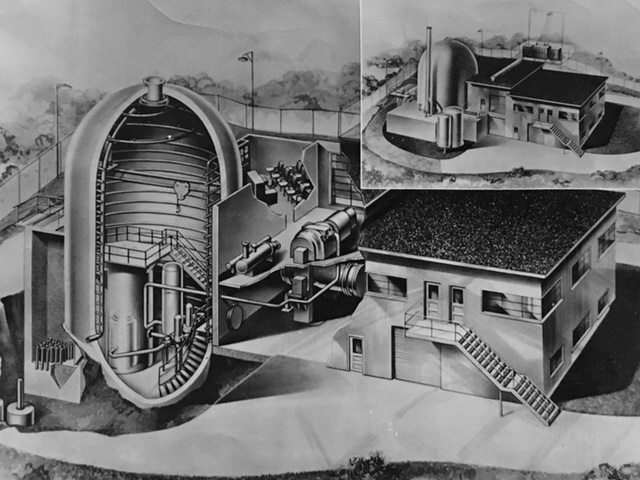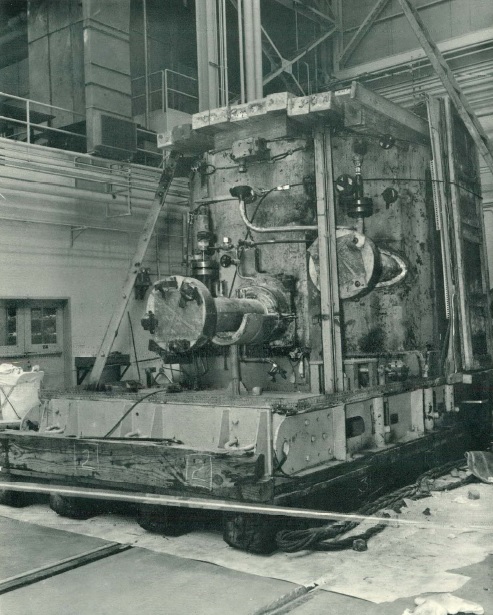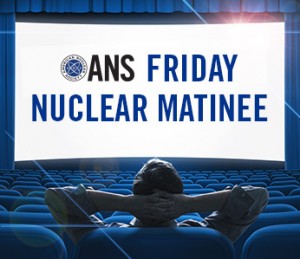ANS Nuclear Cafe Friday Matinee - Relocation of PM-2A
This plant, designed by ALCO Products Inc. at the end of the 1950's, was built to a DoD specification for a small nuclear plant that could be transported by air, and then assembled at a remote site. The plant would have to provide electric power for a base as well as space heating.
ALCO based the plant on the technology it had developed and proven in the SM-1 plant located at Fort Belvoir. That plant, a single loop PWR, was known widely in the early days of atomic energy as both a successful "first" as well as a training hub from which trained operators spread out to all other branches of the services (and even to the NS SAVANNAH.)

ALCO Products press release photo shows the layout of the well known, at least at the time, SM-1 nuclear plant at Fort Belvoir, Virginia. Photo in Will Davis collection.
The PM-2A (in which "PM" stood for "Portable, Medium") was assembled first in the United States although not tested with the reactor operational. The modular units were separated and packaged and flown to Greenland; they were shipped then to the site of Camp Century, which is in remote arctic territory about 150 miles from Thule, Greenland. The plant was installed in tunnels carved from ice and snow.
After operating for several years, the decision was made to remove the plant and bring it back to the United States. The movement of the plant is the subject of our interesting film today.
Although the film states that the plant was moved "for use elsewhere," the fact is that it never operated again. Instead, it was shipped to NRTS Idaho, now INL, where it was further disassembled for various examinations and tests.

The reactor skid from the PM-2A sits in the high bay at Test Area North, National Reactor Testing Station, not long after arrival and unpackaging. From "PM-2A Reactor Vessel Test Program Final Report," Idaho Nuclear Corporation.
The PM-2A reactor vessel was selected for a destructive testing program in which the brittle fracture phenomenon would be examined. The heavily instrumented vessel, with a deliberate flaw cut into the highly irradiated belt-line section of the vessel, was destroyed in testing at NRTS in 1966 at a pressure over 4400 psi and a temperature of -20F. Around this time, this plants vendor lineage ended as well - the original vendor, ALCO Products, had sold most of its military nuclear business and assets to Allis-Chalmers several years earlier, who itself decided to exit the nuclear business entirely in 1966.
Enjoy the film! It runs just over 23 minutes.
DATA ON PM-2A: Electrical power output 1.5 MWe; Space heating output, thermal (in form of steam supplied to base) 0.293 MWt. The fuel load was 19.5 kg U-235, contained in 90% enriched flat MTR type fuel plates. The fuel was fabricated from stainless steel - typical of power reactors at this early date. Primary plant pressure was 1750 psig and maximum hot leg temperature 518F. (Data from materials in Will Davis' library.)


